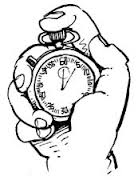Forecasting: More Than A Gut Feeling
Entrepreneurs are a different breed. Not everyone can, is willing, or should go out on a limb and risk so much. Being in business for oneself is hard work but the potential reward, in my opinion, is what draws us in. The ability to build something from ground up or to take over something that’s failing and make it live again is the adrenaline that entrepreneurs thrive on. We’re visionaries. Instead of empty buildings and abandoned warehouses, we see new restaurants and storefronts. But what makes us think we can do this? What pushed you out there? Your gut.
Do you ever get that feeling? When you know deep down that you can do something if only given the chance, the right funding, the right connections. You find yourself shaking your fists and shouting ‘I can do this!’ And you can do it. But, your “gut feeling” often is not sufficient to get the business loan needed to expand the business or to make everyday business decisions that will ultimately help or hinder your business. Investors want to see facts and figures, charts and graphs. Potential partners want to see a plan of growth supported by research and market analysis. You, as a business owner, need to know how many products to produce or how many employees to hire.
Questions like these and many more are often answered by forecasting. Forecasting, in its most basic form, is projections of future events, like sales, income, human capital, etc. Although many think of forecasts as “guesstimates” of what you think will happen based on past trends, this is not true for all models. There are quantitative tools available that get you closer to actual numbers. But, a good friend once told me to let the experts do what the experts do. Unless you are extremely experienced in forecasting, this is a great function to outsource. Search your network for consultants that do business research and strategic planning. It’s worth the money and effort to bring in the expertise to check and see if your gut feeling is right.
Every year, school supplies fly off the shelves. Not only because they’re needed for the school year, but they’re cheap too. For me, with a Kindergartener, it was crayons. Usually about 50 cents a box, I can get them for 30 cents. Deal! It’s rare that a retailer runs out of crayons during this time. Why? Based on various forecasts and sales projections, the crayon company expects a spike in demand and adjusts its supply accordingly. And don’t feel sorry for their lost profits! The company has also calculated just how much they can shave off the regular price to stimulate demand but not compromise profitability. Thirty cents is not a “guesstimate” but a real number backed by solid facts. If they don’t guess, neither should you.Â
***Support Local Businesses: DevMar Products, LLC. Sharon W. Reynolds, President/CEO





